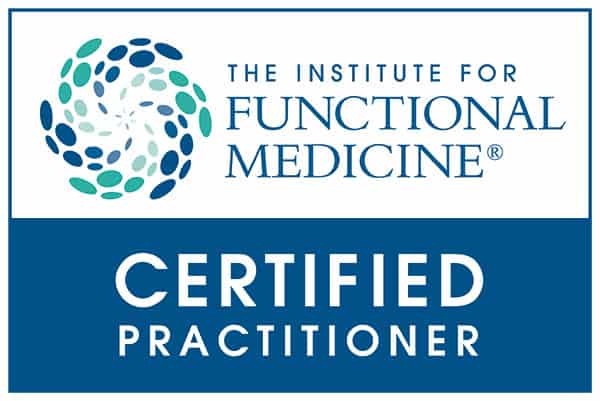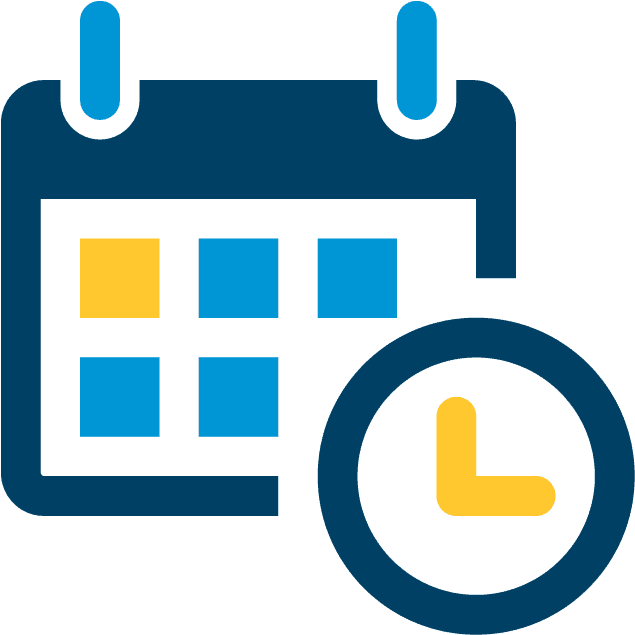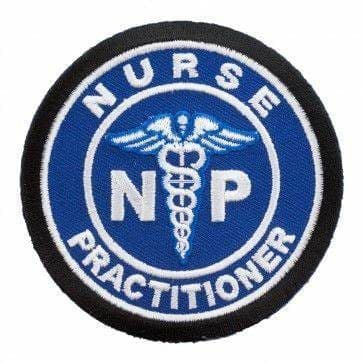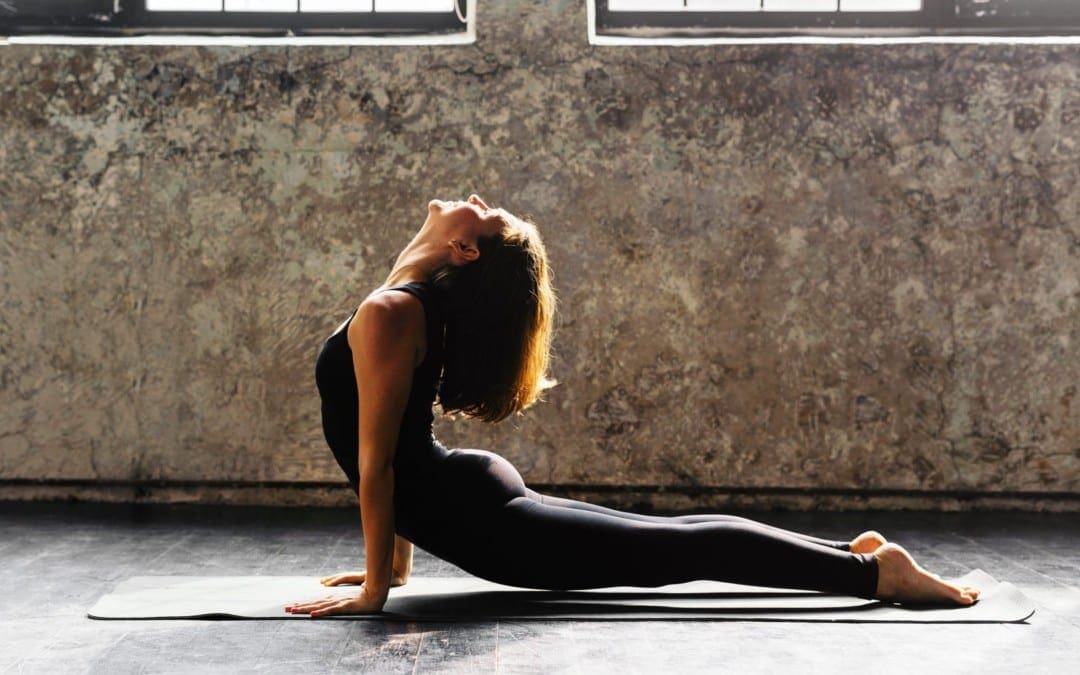
by Dr Alex Jimenez DC, APRN, FNP-BC, CFMP, IFMCP | Fitness, Health, Wellness
You know the feeling: Your email inbox is overflowing, your to-do list is miles long, and you haven’t managed to hit to the gym in days. Trust us, we’ve been there. The result? A super stressed-out you.
While stress begins in the mind (“I need to finish this work presentation in the next hour,” or, “I only have one week to plan my best friend’s surprise party!”), it eventually manifests itself in the body. Think: clenched jaws, shoulder knots, and stiff necks. (Ugh.) And since stress takes such a toll on both your mind and body, it’s important to move in ways that intercept your emotional and physical strain.
RELATED: 3 Yoga Stretches to Relieve Anxiety and Stress
Luckily, you don’t need to set aside hours to find your center. In fact, just 15 minutes of this calming yoga sequence might be enough to help you de-stress. This simple routine can be done anywhere—all you need is some space to put down your mat.
And as an added bonus, you’ll actually be strengthening and lengthening your muscles while doing the flow. This is one reason why yoga is the ideal activity for days when you’re feeling overwhelmed, says clinical therapist and yoga instructor Lauren Taus. The mindful practice gets you moving on the mat and focused on the present, so you pay less attention to what’s still on your to-do list.
In this video, Lauren takes you through a calming yoga flow that will help you find your center and slow down. Because who doesn’t want to feel more relaxed in just 15 minutes?

by Dr Alex Jimenez DC, APRN, FNP-BC, CFMP, IFMCP | Anti Aging
Middle-aged men jonesing for a boost in vitality are turning to steroids in increasing numbers, say researchers and health professionals. Men in their 40s, 50s — even 60s and 70s — are turning to hormones to fight the effects of aging, including weight gain and decreased libido, according to The Guardian.
Joseph Kean, a visiting research fellow at Liverpool John Moores University, said that usage has doubled in the number of men 50 and over in the past five years. He told The Guardian, “Guys are saying they just want to stand a bit taller and feel they can stand alongside the younger generation who are much more aware of how they look.”
But the vision of a buffer, more energized you comes with caveats — including the potential for worsening sleep apnea, heart disease, blood clots, and prostate complications.
Testosterone levels decline early on, starting at around age 30. This drop can lead to any number of unwanted side effects and problems, according to the National Center for Biotechnology Information at the National Institutes of Health. Low-T as it is often referred to, is responsible for much more than just weight gain and decreased sex drive. It is correlated with insulin resistance, low muscle strength and development — even poor cognitive function. So it’s a given that men would want to head off this decline and preserve their vigor for as long as possible.
“We have come across a lot of older men using [steroids]. It’s almost like hormone replacement therapy [for menopause relief] for females. Steroids can help you lose body fat as well,” Julien Baker, an applied physiology professor at the University of the West of Scotland, told The Guardian. “The evidence isn’t there about what the long-term impact is yet. We are not sure what these drugs are doing to you at that age, but everyone perceives it as safe.”
Magazines geared toward rejuvenation through hormone replacement have sprung up, as have clinics that promote testosterone replacement therapy in the United States and abroad.
The Juice Clinic in Sheffield, England, is one such service for people using steroids and image-enhancing drugs. Sid Wiffen, the clinic’s team leader, told The Guardian he has noted an increase in older men asking for help. “Steroid use for older men is often about the youthful effects, and about body image and energy levels. I hear talk of men feeling more pressure now to look good, so they are more likely to go to the gym and dress well,” he said. “It can be dangerous, and it does worry me. Lots of people we see are keen to make an informed decision about their steroid use, but some get information elsewhere and it’s not always good.”
That elsewhere includes the internet of course, where misinformation on the topic flourishes. The healthier, safer route by far is to seek the advice of a physician and get a prescription.
Steroids, officially known as anabolic-androgenic steroids, were first developed for medical use in wasting conditions. Their possession or sale without a prescription is illegal in the United States, though some people are able to get them online or in gyms. Some countries permit legal possession, including the U.K., though it is illegal to supply them there. Steroids come in pill form, injectables (intramuscular), and topical gels.
Baker said while there could be some benefits for older men, the risks should be well understood. “Introducing something your body stopped producing naturally may lead to repercussions or have health implications,” he said. “There’s not enough research out there to look at that. Someone taking steroids at 50 — it’s not clear what might happen to them in the future.”
Once users discontinue the use of steroids, many report withdrawal symptoms such as low mood and anxiety, something men should keep in mind as well.

by Dr Alex Jimenez DC, APRN, FNP-BC, CFMP, IFMCP | Anti Aging
Most people see their sleep habits shift as they age, but a new review suggests that some seniors lose the ability to get deep, restorative rest.
And that can come with health consequences, said review author Bryce Mander, a sleep researcher at the University of California, Berkeley.
Sleep “fragmentation” has been linked to a number of medical conditions, including depression and dementia, Mander said. People with fragmented sleep wake up multiple times during the night, and miss out on the deep stages of sleep.
It is true that medical conditions, or the treatments for them, can cause sleep problems, according to Mander.
But poor sleep can also contribute to disease, he added.
Take dementia, for example. Research suggests there is a “bi-directional” link between sleep disruptions and the dementia process, said Joe Winer, another Berkeley researcher who worked on the review.
That is, dementia often causes sleep problems; poor sleep, in turn, may speed declines in memory and other mental skills. According to Winer, animal research suggests that deep sleep helps “clear” the brain of the amyloid-beta proteins that build up in people with dementia.
So there may be a “vicious cycle,” Winer said, where dementia and poor sleep feed each other.
Similar vicious cycles may be at work with other diseases, too, Mander said. He also stressed, though, that some shifts in sleep habits may be perfectly normal.
Older people are famously prone to being “early to bed, early to rise.” They may also sleep a little less than they used to in their younger days. And that may be fine, the researchers said.
“We don’t want to create a panic that if you’re sleeping a little less than you used to, you’re going to develop dementia,” Mander said.
But, he added, it is important to recognize sleep as one of the lifestyle factors critical to good health — right along with exercise and a healthy diet.
In fact, Mander noted, one reason that regular exercise keeps us healthy is that it can support better-quality sleep.
“Why do some people age more ‘successfully’ than others?” he said. “We think sleep is one of the factors.”
Dr. Sanjeev Kothare, a sleep specialist who was not involved in the study, said poor sleep “clearly” has health consequences.
Sleep apnea is a good example, said Kothare, of the NYU Langone Comprehensive Epilepsy-Sleep Center, in New York City.
Obstructive sleep apnea causes repeated stops and starts in breathing during the night, and it’s linked to major diseases, such as heart disease and diabetes. Research also suggests it can hasten declines in memory and thinking.
Dr. Phyllis Zee is chief of sleep medicine at Northwestern University in Chicago. She said sleep quality is more important than “duration.”
So if older people are sleeping a little less than they used to — or wake up once at night then quickly fall back asleep — that’s probably not a red flag, according to Zee.
But, she said, older adults should talk to their doctor if they routinely sleep less than six hours a night, or lack long “consolidated” blocks of sleep.
In some cases, Zee said, sleep apnea may be to blame.
In other cases, people may need lifestyle adjustments that can improve their sleep. The good news, Zee said, is that “behavioral and environmental changes are powerful.”
Older people can improve their sleep by fitting physical and social activity into their daily routine, Zee said. At night, she suggested they make sure the bedroom temperature is comfortable and limit exposure to artificial light — especially the blue glow of computer and TV screens.
Zee also stressed the importance of getting enough daylight, in the morning and afternoon: That helps keep the body’s circadian rhythms (the sleep-wake cycle) on track.
But people should not wait until old age to care about sleep. According to Mander’s team, people often start losing the capacity for deep sleep in middle age, and that decline continues over the years.
What’s not clear yet, Mander said, is whether good sleep habits earlier in life help protect people from sleep problems in old age.
The review, which analyzed medical literature on the topic of sleep and aging, was published online April 5 in the journal Neuron.

by Dr Alex Jimenez DC, APRN, FNP-BC, CFMP, IFMCP | UTEP (Local) RSS
Related Articles
UTEP track and field member Tyler Ragin received the Conference USA Winter Spirit of Service Award, the league announced on Wednesday.
The junior has compiled more than 194 hours of community service this season, the majority of which was volunteering at the Boys and Girls Club of Central Georgia as a tutor, coach and mentor. She dedicated 30 hours at the R.E.A.L Academy helping with camps and organizing activities for kids.
The Macon, Georgia, native is a staunch supporter of driving while sober, as she volunteered at Mothers against Drunk Driving greeting walkers and spent additional time walking to end breast cancer at the AVON 39 event.
She also helped promote SAAC Hunger handing out flyers promoting hunger week.
Ragin is an organizational and corporate communications major with a marketing minor and earned a spot on the C-USA Commissioner�s Honor Roll list.
Ragin set a personal best of 5.79m (19-0.00) in the long jump at the Cherry and Silver meet. She scored points for the Miners in the long jump helping the women�s team secure their third consecutive C-USA team title.

by Dr Alex Jimenez DC, APRN, FNP-BC, CFMP, IFMCP | 915 Crossfit WOD Rss, Crossfit (Local)
Preparation:
Flip Flop KB Stroll. Maintain one KB expense and Another of same fat
together with your reverse palm at your part. Function to biggest stroll (period of grass) in 10min
Ability
hi Hold Draw + Hi Hold Hi Pl + Hi Hold Sn
Oly
Novice: 15 minute to Locate biggest Complicated-
Hello Suspend Draw + Hi Hold Hi Pl + Hi Hold Sn
Sophisticated: 15min to locate biggest hold energy clear
MetCon
forty KBS (55/44)(44/35)(35/25)
forty Again Squats (95/65)(75/55)(45/35)
thirty KBS
30 Top Squats
20 KBS
20 OHS
12min Period Limit
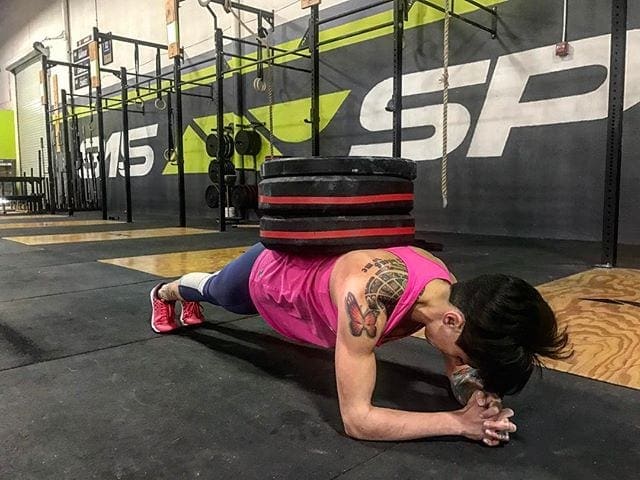
by Dr Alex Jimenez DC, APRN, FNP-BC, CFMP, IFMCP | 915 Crossfit WOD Rss, Crossfit (Local)
Femmefit Thursday April 6 2017 – Crossfit 915Crossfit 915
Ability check: 800m work
WOD
10-9-8-7-6-5-4-3-2-1
burpee to expense
Basketball slams

by Dr Alex Jimenez DC, APRN, FNP-BC, CFMP, IFMCP | Agility & Speed, Fitness, Mobility & Flexibility
There are 3 primary parts of exercise: cardiovascular exercise, strengthening exercises, and flexibility training. And let�s face it�those first 2 typically get more emphasis. Cardiovascular exercise (running, for example�anything which gets your pulse up) and strength training (lifting weights) come with some rather immediate outcomes. They help us build muscle and lose weight , all while helping us be more fit. It takes longer to see those advantages.
But here�s the deal: flexibility becomes more significant as you grow old. Being limber can help battle those aches and pains related to aging; stretching can help you maintain better joint health. It can also make those daily jobs�carrying groceries, going up and down stairs etc. much easier.

However, you can�t wake up when you�re 64 and unexpectedly be equally as adaptable as you were when you were 24. It�s much better and even more efficient to work flexibility training into your workout routine throughout your own life.
(Rest assured: if you are 64 and were hoping to regain some of that youthful flexibility, you can start working it in your workout routine now. Simply be realistic concerning the outcomes. You will, most likely, never be as flexible as you once were, but working on flexibility at any age is rewarding.)
Talk To Your Physician Or Physical Therapist Before Beginning A New Workout Plan
They could help you establish realistic targets and create a plan that best suits your life. You may want to think about working with a personal trainer to assist you ease into the brand new routine.
Flexibility Training Is More than Doing A Few Stretches
After a run is yes, better than nothing, doing a couple of hamstring stretches, but you won�t find as many long-term gains as you’d see from a flexibility plan that is more developed.
To get the most benefit from flexibility training, you should have a personalized program, one that takes into account your body and demands. As stated earlier, a personal trainer or physical therapist is able to help you develop the best plan for you.
And remember: the more time and attention you give to flexibility training, the more gains you�ll see�especially those long term gains.
Take Your Actions Into Account
Think, also, about your daily life: does your job involve a lot of sitting or lifting?
A personalized flexibility training program is able to help you enhance your freedom (how well your joints move) and stability (keeping good posture and body alignment during actions in order for your body isn�t under undue strain). It can allow you to excel in sports or your activities, in addition to help you take good attention to your body on a daily basis.
Give Special Focus To Muscles That Feel Tight
The shoulders, chest, hamstrings, and hips are often tight, but you may find tightness in other regions depending on harms, pressure in your lifetime, or how rough a particular workout was. By tailoring your flexibility training to your body, you�ll prevent overstretching muscles�or muscles that are lost that need consideration.
Your Body Knows What�s Best for It
Listen to your body, and don�t push it too much when you�re stretching. Instead, ease into a stretch when you�ve reached the limit of what you are able to do at that point, and understand.
Also, you need to prevent ballistic stretches�that sort of extending where you bounce in and out of the stretch. That strategy isn�t as successful holding the stretch for about 10 to 30 seconds and then as slowly stretching your muscles.
You Can Be Creative With Stretching
Within the plan that was developed for you, you can use resistance balls, towels, or other props that’ll allow you to go deeper in your stretches. Assortment will also make you more likely to stay with your flexibility training plan.
Warm Up For Stretching
You may be a bit confused�isn�t stretching a warmup? How do you warm up for stretching? This is where a brisk walk or short jog can help: get your heart pumping and your muscles limber before stretching.
Take A Flexibility Course In The Fitness Center
Assess your gym�s class program; it may be that they have a few flexibility or stretching classes. Sometimes these courses combine cardiovascular work, strength training, and flexibility work�all 3 parts of exercise in one class! Or you may take a class that�s exclusively focused on stretching.
Your Mind Can�Stretch
Pilates and yoga are outstanding flexibility training trainings. Plus, they teach you about relaxation, meditation, and other head-body techniques�ways to help calm your body and emotions, which can, subsequently, make your body more receptive to being stretched.
Stretching Is Significant for Everyone
Maybe you’ve got this bogus organization with extending�that only individuals in rehabilitation do it or that it�s only for individuals who aren�t actually in shape (that’s: it’sn�t �real� exercise). Well, it�s time to go past that misconception. Everyone should stretch. Look for inspiration or proof at Olympic and professional athletes: they know that flexibility training is a key section of peak performance.
You Must Be Consistent
It needs to be part of your routine, for stretching to be as effective as possible. This isn�t something which you do for a few weeks and after that move on. Regular stretching and flexibility work�along with cardiovascular exercise and strength training �will assist you to take good care of your own body for years to come.

Call Today!











